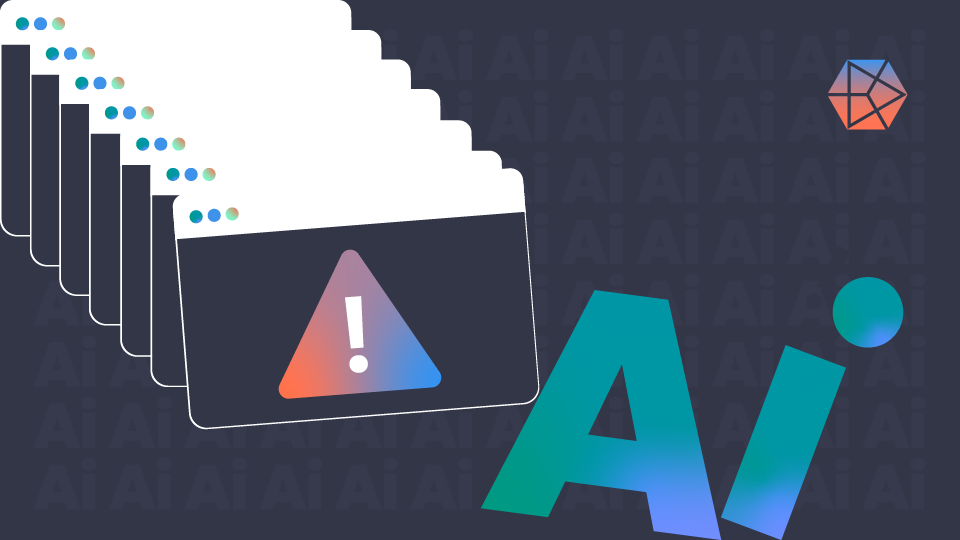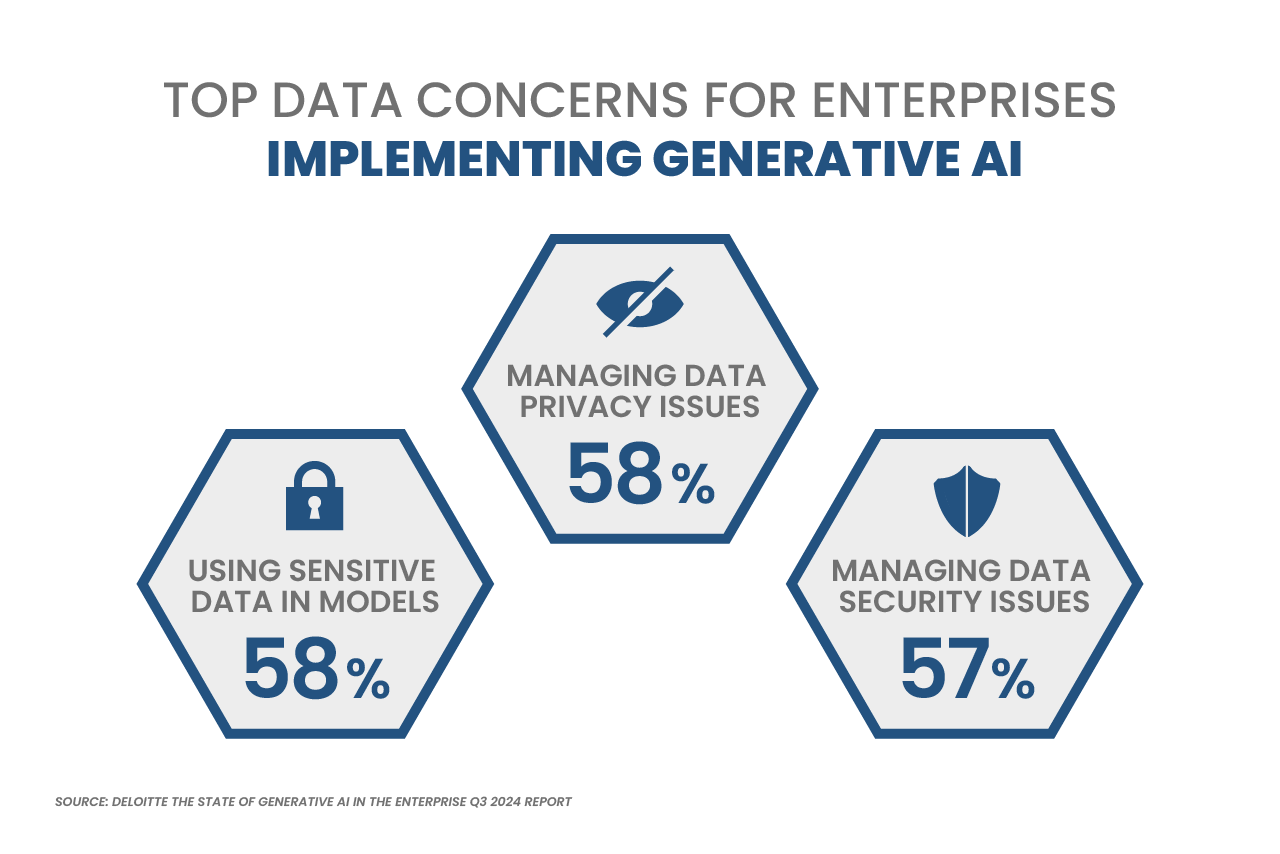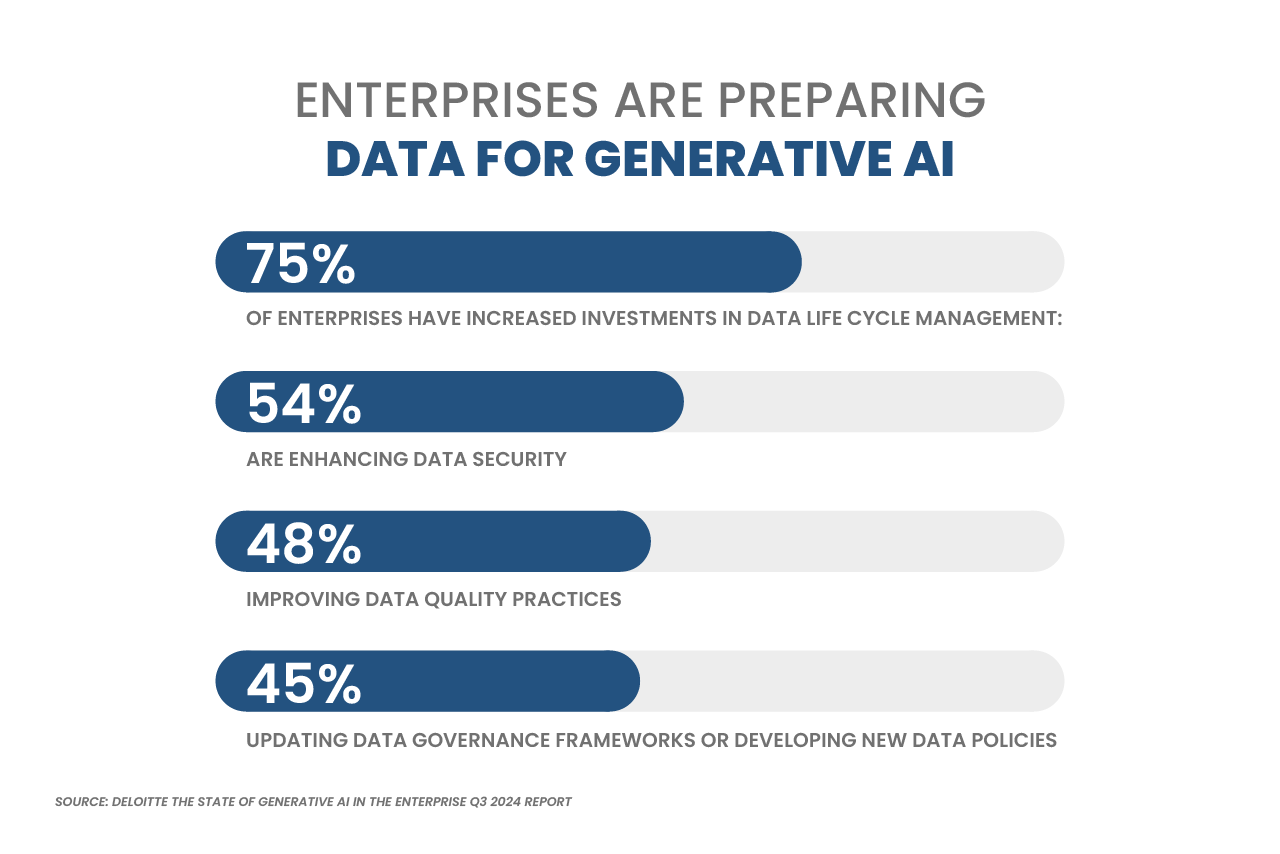
Have you developed an enterprise AI application in the past year that failed to deliver results? Maybe it doesn’t solve the pain point it was initially designed to address. Maybe it failed to reach full adoption. Or maybe the artificial intelligence software development company you hired simply built a bad AI solution.
Unfortunately, only 30% of enterprises avoid the pitfalls and achieve a high ROI from introducing AI systems. There are countless reasons why an AI project might fail. Here are some of the most common reasons we’ve seen so you can begin troubleshooting why your enterprise AI application isn’t working.
Unclear Expectations And Goal Setting
As an emerging technology, many enterprises feel the need to integrate AI whether it is the right tool for the job or not. It’s the shiny object syndrome and silver bullet fallacy rolled into one. Going into your enterprise AI application expecting it to solve all your problems sets it up for failure.
Instead, prioritize AI opportunities by ranking potential investments and focusing on the single business function that can benefit the most. Evaluate potential opportunities based on their ROI, level of stakeholder buy-in, and your organization’s ability to execute. This strong start will create a foothold from which you can expand. Setting clear goals also makes it possible for your artificial intelligence developers to understand the business case and create a project roadmap to ensure that goal is met.
Creating an Overcomplicated AI Application
When there are unclear expectations going into an AI development project, it can be easy for stakeholders to insert additional features and functionality. Even if the business case is clear, you may be attempting an AI software development that is too complicated for your organization’s current AI maturity level and data readiness.
Start with a simple but impactful AI implementation before expanding your enterprise’s AI use. This will increase the likelihood of success and serve as a strong building block and case study for future projects.
Data Issues
Over half of organizations are avoiding generative AI use cases because of data-related issues.

Data is the most important factor of any artificial intelligence development project. As the raw material for AI, the quality of data determines the quality of your outputs. How well data is organized and labeled determines how well your model will be able to utilize that data. If you aren’t getting the outputs you hoped for from your AI model, you may need to improve your data science maturity level before embarking on any future AI development.
Incomplete Implementation
Many times an artificial intelligence development company will deliver an excellent MVP that solves all your problems but ultimately fails. This may be due to a failure to integrate with your existing systems and infrastructure. AI shouldn’t be isolated. It needs to be tied into your existing business processes to reach its full potential and have the most impact. If your AI wasn’t integrated or was integrated poorly, it won’t see as much use and it won’t have as much impact on your business.
Another symptom of an incomplete implementation occurs when you attempt to scale your AI application. Any of the other reasons for an AI failure, such as bad data or issues with the AI model, may not reveal themselves until you attempt to scale. Make sure your AI developers are building your application with this in mind from the beginning.
Using a One-size-fits-all AI Solution
Using an existing AI model is a great way to approach artificial intelligence software development on a budget. However, existing AI models and off-the-shelf tools aren’t suited for the same AI applications. Choosing a one-size-fits-all tool or a framework that isn’t well suited for your use case could result in an AI failure.
While starting with an existing AI model is usually preferable to keep AI development costs low, it will most likely need to be fine-tuned and customized to meet your specific needs. Look into custom software development services to help better tailor and integrate your solution.
Issues with AI Models
In addition to choosing the wrong model for your use case, there are many other issues that may cause your AI model to fail. Check out this list of the best ChatGPT alternatives to understand how different models suit different needs. Other issues with your AI model may include:
- Model Instability: AI models may become unstable if they are overly sensitive to small variations in input data, resulting in inconsistent outputs and unreliable predictions.
- Bias: Models can unintentionally reinforce biases if they are trained on data that reflects existing company or societal biases.
- Brittleness: AI models may perform well in controlled environments but fail when confronted with slight deviations or unexpected inputs.
- Low Level of Performance or Accuracy: The specific function you need your AI model to perform will determine how accurate you need it to be and how much training and fine-tuning needs to occur to reach those levels of performance and accuracy.
- Failing to Monitor and Update Models: Without regular monitoring and updates, AI models can degrade in accuracy over time as real-world data patterns evolve.
Poor Change Management
Perhaps your AI application works just fine but failed to reach adoption with your end users. This may be the result of poor change management.
Before embarking on an AI development project, you need to understand its potential impact on the organization and align stakeholders and leadership. During and after development, address resistance to artificial intelligence adoption by collecting input from leaders and end users, incorporating that input into development, and creating AI training and education programs.
How to Fix Your Enterprise AI Implementation
The above are just 7 common reasons your enterprise AI application isn’t working. What can you do to troubleshoot and fix your enterprise AI? Here are a few steps:
Audit Existing AI Models
Evaluate the AI models used in your application. Look for any instability, bias, or brittleness. Working with a third-party AI model can make this difficult as much of the underlying technology isn’t accessible to you.
This is another reason to make your AI applications as simple as possible. This will make it much easier to identify any potential problems.
Choose the Right AI Tools and Technologies
Evaluate different tools and technologies to match the AI approach to your use case. Gigster recently worked with an international non-profit organization that was using Microsoft Copilot. Unfortunately, Copilot wasn’t able to perform the necessary functions. Gigster was able to evaluate whether a better-suited AI model would be needed or if Copilot could be trained and optimized to meet their needs.
Improve Data Quality and Management
The best investment you can make to improve your existing AI application and any future projects is to modernize your data foundations and improve data quality and management. As AI gets more flexible and agentic, it will need access to well-organized, high-quality data to unlock its full potential. Investing in data now will pay huge dividends later.

Let's Make Sure Your AI Enterprise Application Works
Work With an Artificial Intelligence Development Company
Working with developers who know AI inside and out makes a big difference. If your failing AI project was developed by an outside development company, check out our guide to evaluating artificial intelligence development services.
Gigster has expertise in AI transformation, security, and compliance. We can help troubleshoot your AI application and identify improvements to help see the greatest ROI from your AI investment. Share your AI project with us today to get started.
